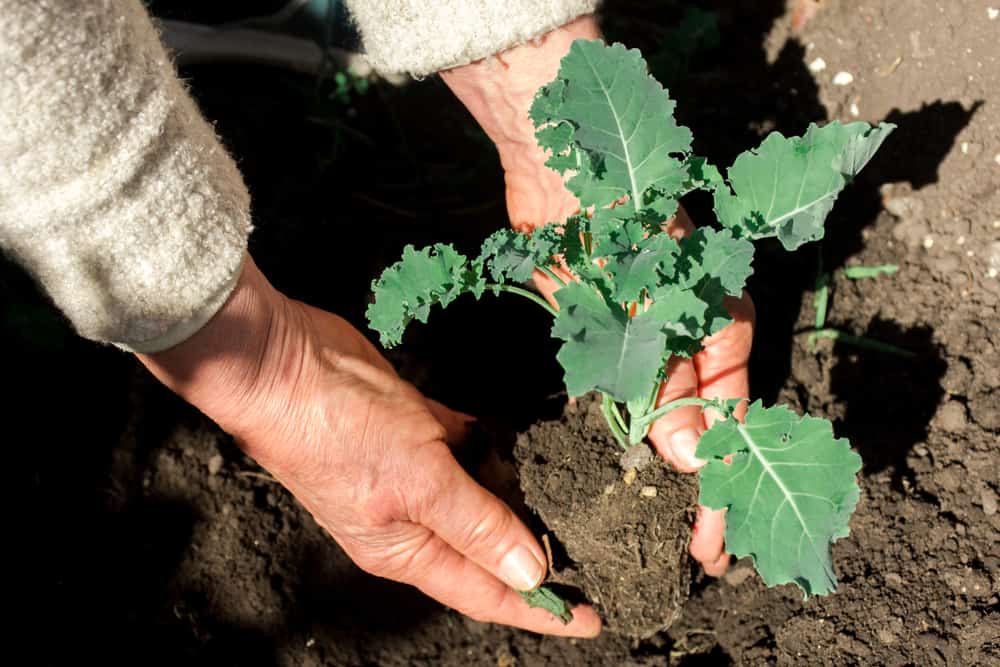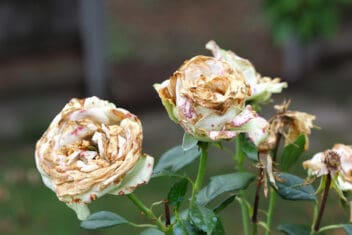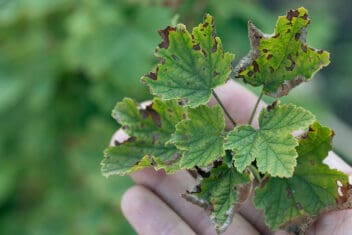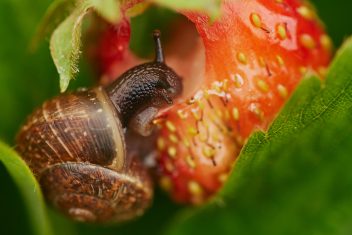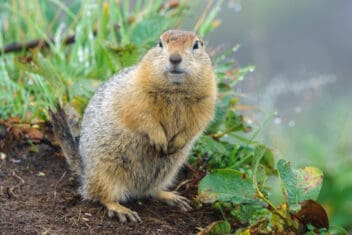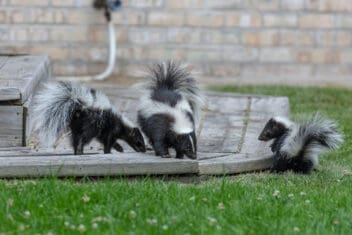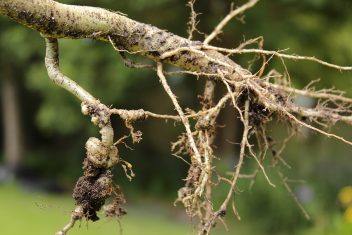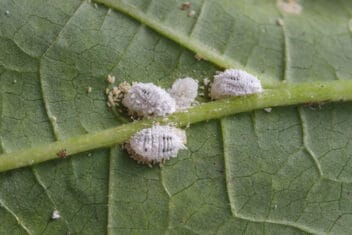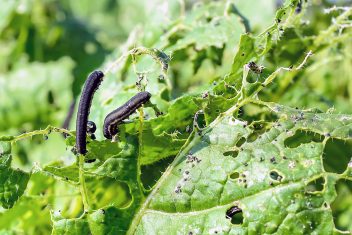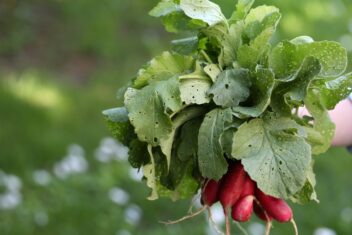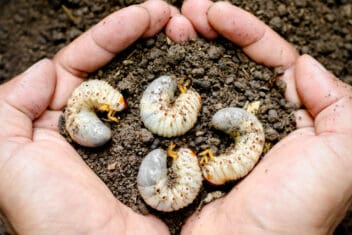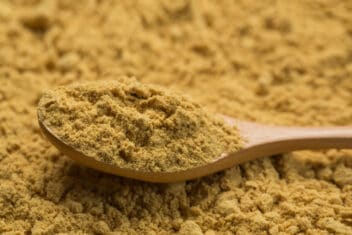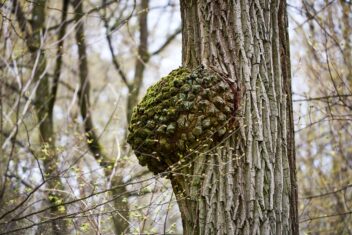Kale is one of my favorite crops. In a garden full of brassicas, we always save two plots for kale and that keeps us in fresh greens longer than any other species. But with all its hardiness and versatility, you might still run into problems while growing kale.
When our kale fails to thrive, sympathetic well-wishers wonder how on earth that could have happened, but they usually have no advice. Sometimes, the easiest plants to grow are the most difficult to troubleshoot. If you’re worried about an unsuccessful crop of kale, you’re not alone – there are a host of reasons why your kale might fail.
Here are 15 of the most common issues and how to address them.
The Most Common Kale Growing Problems
Red Russian kale is a perennial favorite in our house – it’s tender enough to eat raw and hardy enough to last through the first few touches of frost in the fall. Long after the lettuces are done, outlasting even the Swiss chard, our kale is often green and growing until snowfall.
Even still, kale isn’t invincible.
Pests are probably the biggest of the problems you’ll encounter. Larger pests are easier to identify than smaller pests. For some reason, groundhogs and rabbits tend to prefer brassicas to every other plant in the garden. I once had a groundhog who ate every brassica in my garden without bothering to touch any other plant.
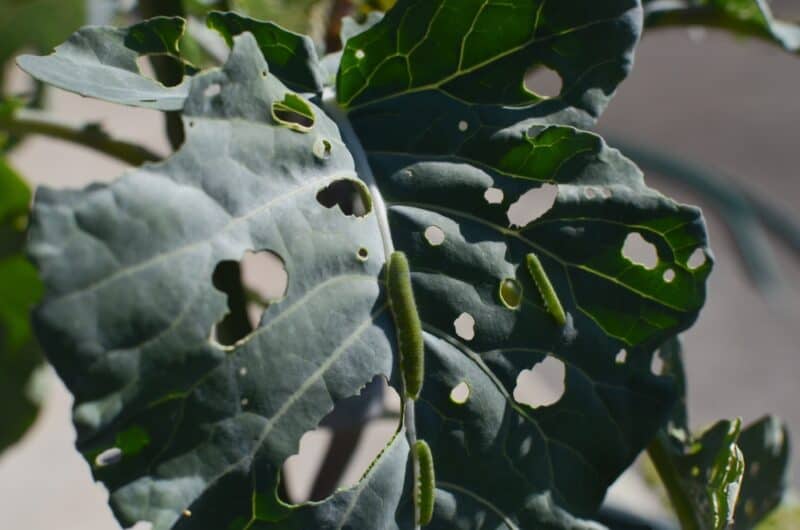
Kale is not a disease-prone plant. But you should still keep an eye out. Fungal or bacterial diseases can run rampant in kale beds if the right conditions exist. The best way to grow healthy kale (and other) plants is to keep your garden clean, fresh, and well-drained.
Keep your beds weeded, clear of debris, and open to the sunlight if you want to prevent fungal or bacterial infections in your plants. But even the best-tended gardens fall prey to infection at some point. Keep an eye out for a few, common kale diseases no matter how clean the garden is.
1. Leaves Have Holes
Those small, simple white butterflies (Pieris rapae) hovering around your garden are a common cause of holey leaves (slugs and cabbage loopers are the other two). All those pretty butterflies unleash a horde of green caterpillars into your garden when they lay eggs. These little caterpillars are the cabbage white butterfly worm.
Cabbage worms eat the leaves of all brassicas, including kale. They’ll devour leaves and leave droppings all over your plants – contaminating your greens.
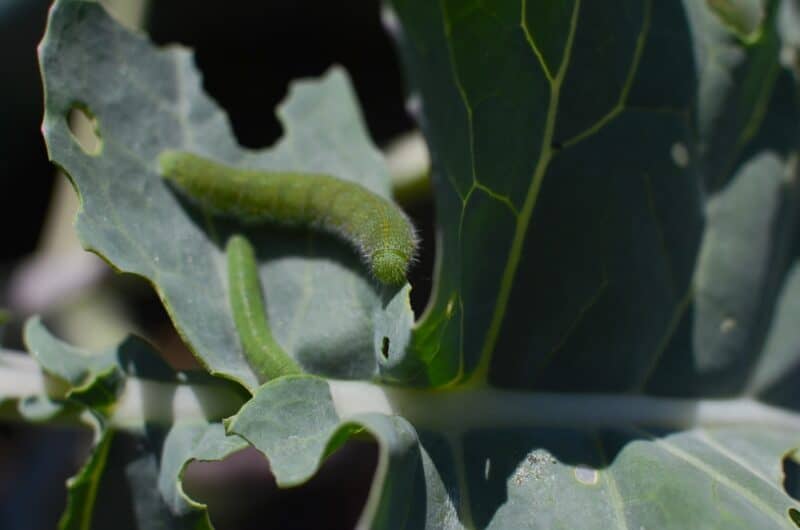
These worms are the most common and most devastating kale pest. If possible, try to prevent an infestation before it happens.
To prevent an infestation, cover your kale plants with row covers to keep out the butterflies before they lay their eggs. Row covers are a fantastic tool to protect your plants from a host of pests. You can also go around and remove cabbage worm eggs from the leaves of your plants after they’ve been laid.
Eggs are usually on the underside of the leaves. They’re tiny and difficult to see, though, so sometimes it’s easier to simply spray the underside of the leaf with insecticidal soap.
If cabbage white butterfly worms are already wreaking havoc on your kale plants, you may have to pick them off by hand. The caterpillars tend to blend into the leaves, but if you look closely, you’ll see them. Once you’ve collected a small jar of cabbage worms, feed them to your chickens or drop the worms into soapy water to kill them.
You can release your chickens into the garden to hunt cabbage worms, but remember that chickens will eat your kale leaves as well as the worms. For more tips, head to our comprehensive guide to controlling cabbage whites.
2. Stunted Growth and Ragged Holes
If your plants seem to be stunted and you see ragged holes throughout the leaves, it might be cabbage loopers (Trichoplusia ni).
These caterpillars look like the beefier cousins of cabbage white butterfly worms and the damage is similar. They’re big, green caterpillars that later grow into gray moths. Like cabbage worms, the looper can be prevented with row covers or plucked off of your kale plants and fed to your birds.
Both pests also respond well to the pesticide Bacillus thuringiensis (Bt). Bt is a bacteria that kills off insects that feed on leaves. It’s considered safe for bees and other pollinators as well as for humans and other animals.
3. Weak Plants and Yellow Leaves
Almost every list of garden pests includes aphids. No matter what you’re growing, indoors or out, aphids are one of those kale growing problems you’re bound to see. Cabbage aphids (Brevicoryne brassicae) are a particular problem for kale.
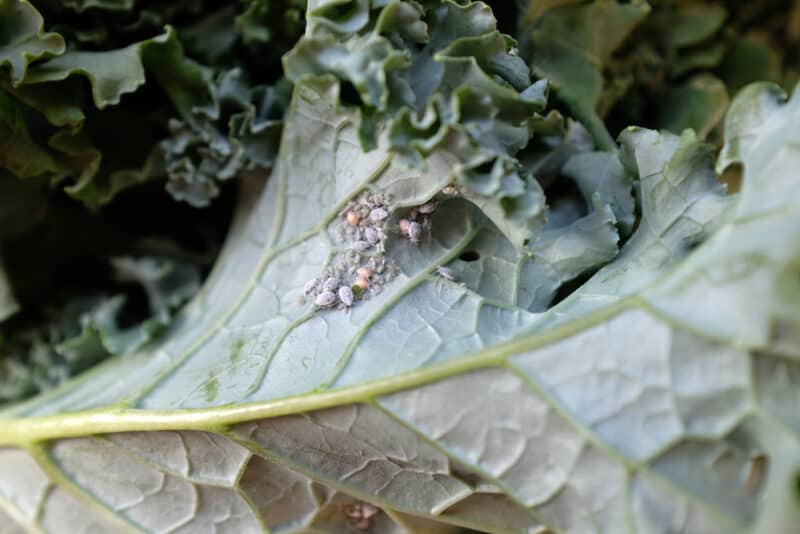
These wooly-looking, gray-green creatures suck the juices out of kale and other brassicas. The results are leaves with yellow stippling, or they may be yellow overall, and the plant might be weak and stunted.
Fortunately, once you know how to handle them, aphids are an easy pest to overcome. Mix up a little insecticidal soap or treat with neem oil to keep aphids at bay.
4. Crisp, Brown Leaves and Thin Spots
Harlequin bugs are bright, colorful pests that come out in force once the warm weather hits. If you’re growing kale all through the summer, harlequins might become a problem from midsummer through August. For some gardeners, clearing the garden of brassicas for a few weeks in late June is the best way to fight these persistent, leaf-devouring pests.
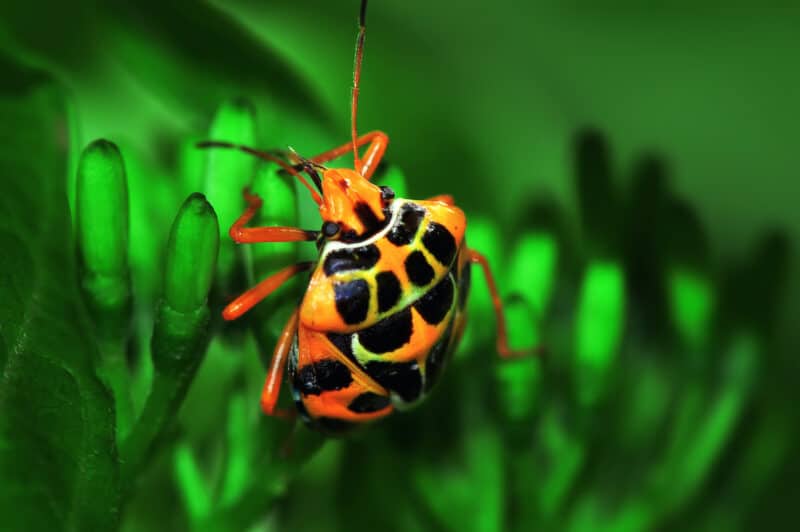
For those of us with an already short growing season, that’s not an effective solution. I pluck these slow-moving pests off my plants and feed them – with all the others – to my ever-hungry chickens. Other people use a glass jar of kerosene and plunk their harlequin bugs into the jar. Whatever you choose to do, remember that kale is a forgiving plant. If you have to cut it back, or even dig up and reseed later, it’s ok.
5. Tiny Shotholes in Foliage
If you’re noticing a lot of tiny holes in the leaves of your kale, it’s likely you have an infestation of flea beetles. These little pests tend to thrive in gardens where fall cleanup is minimal and regular weeding just doesn’t happen.
If you notice tiny holes appearing on the leaves of your kale, try spraying them with a mixture of 3 parts water, 1 part rubbing alcohol, and 1 part dish soap. Or dust your kale leaves with talcum powder. Both of these at-home pesticides will fight off flea beetles, but remember to wash your kale leaves well before eating them after an application of either.
6. Rotting Leaves
A bacterial infection caused by the pathogen (Xanthomonas campestris pv. campestris), black rot is as disgusting as it sounds. This disease starts out as small, papery, brown spots on the leaves, but it quickly escalates. Soon, all your kale leaves are turning black and falling off to rot on the ground.
Definitely not one of the kale growing problems that you want to ever come up against if you can avoid it.
If your plants are in a dank, humid place without airflow or consistent sunlight – they’re much more likely to develop black rot. But if you’re stuck in the middle of a very humid season, or an excessively rainy month, black rot can develop even in open, well-weeded spaces. If it does develop, pull up your plants and leave the bed bare for a season to kill off the bacteria.
7. Brown and Gray Spots on Leaves
Alternaria is a fungal disease caused by Alternaria brassicicola and A. brassicae that results in brown and gray spots on kale leaves. Again, fungal diseases take hold when the weather is damp and humid. When the rain is pouring down, check on your kale. If you see signs of Alternaria leaf spot, treat with a fungicide as soon as possible.
One of the most powerful weapons in the fight against fungal and algae-based diseases is a copper spray. I try to avoid commercial fungicides and sprays as much as possible, but sometimes there’s no other way to save your harvest.
These copper-based fungicides can slow the spread of diseases – including downy mildew – but they can’t cure them. Use these fungicides on the rest of your kale after removing the infected plants. If your garden has a history of fungal problems, use the copper spray before your plants show signs of infection.
In gardening, “the best defense is a good offense.” Keep the garden clear of debris, weeds, and last year’s leaves. Plant in well-drained soil and leave plenty of space between plants. Then, if you think your garden needs a little bit of extra help preventing infection, use a copper spray to keep fungal and algae diseases at bay.
Copper spray will not help with bacterial infections, but I like to companion plant my kale with naturally anti-bacterial plants like garlic, onions, oregano, and thyme. These plants won’t completely prevent infection, but they do seem to help reduce the likelihood of bacterial diseases.
8. Irregular, Dry Brown Spots on Leaves
A fungus that spreads quickly in rainy weather and creates dry, circular lesions on the leaves of your kale plant, Anthracnose (Colletotrichum higginsianum) is almost impossible to get rid of once it attacks.
To control Anthracnose, pull up all infected plants and burn them. It’s also a good idea to keep your kale plants well-spaced. Fungi have a hard time spreading from plant to plant when there’s enough room for sunlight and airflow between the plants in each row.
9. Fuzzy Coating on Leaves
Downy mildew (Peronospora parasitica) is caused by a fungus-like pathogen called an oomycete. It shows up as a fuzzy (or downy) coating on the underside of the leaves along with patches of white or yellow – definitely not something you want to eat!
Like many diseases, downy mildew prefers damp, humid conditions. Recently, we had a stretch of wet, cool weather in the summer that gave all these diseases an opportunity to flourish. It’s hard to fight Mother Nature. In excessively wet seasons, extra spacing between rows and consistent weeding are your best weapons.
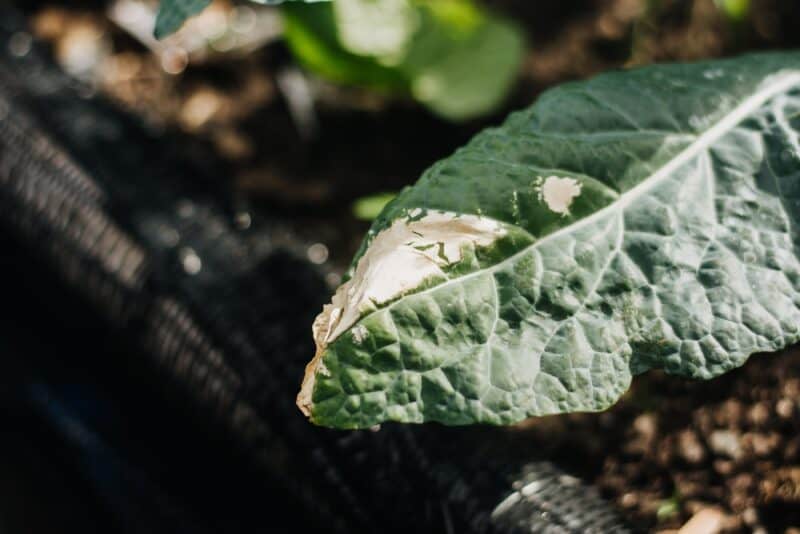
Powdery mildew (Erysiphe cruciferarum) can also cause fuzzy growth, but it usually starts out as white patches before progressing to the fuzzy coating. Our guide to this common disease has lots of tips for identifying and treating this problem.
10. Wilting Leaves
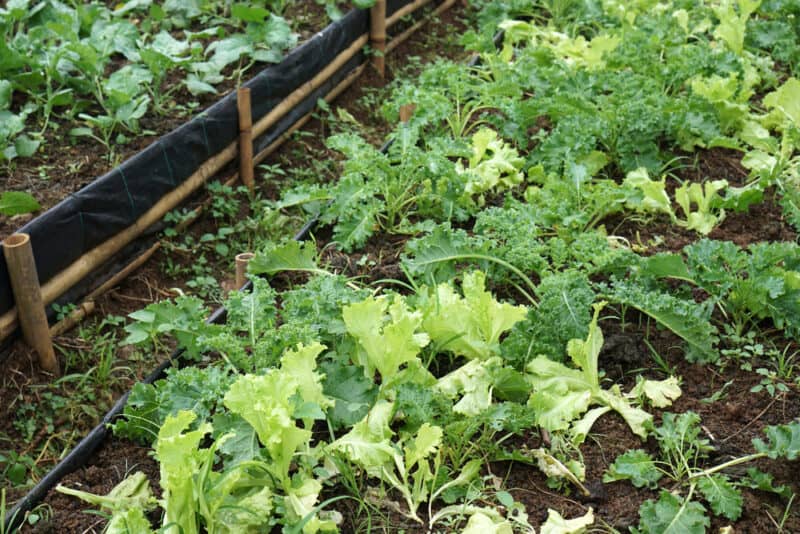
Kale definitely doesn’t like it hot. This is a plant that prefers cooler weather, with temps in or below the 70s°F being ideal. It also needs a good amount of water. If it dries out too much or if the weather is too hot, the leaves will droop and wilt.
If water is the problem, add some. If heat is the issue, you can try offering some shade by propping shade cloth over the plants during the worst of it. Misting with a hose can also help.
If neither of these appear to be causing the issue, it’s time to look for pests and diseases. Examine the potential problems when growing kale listed above.
11. Leaves Turning Purple
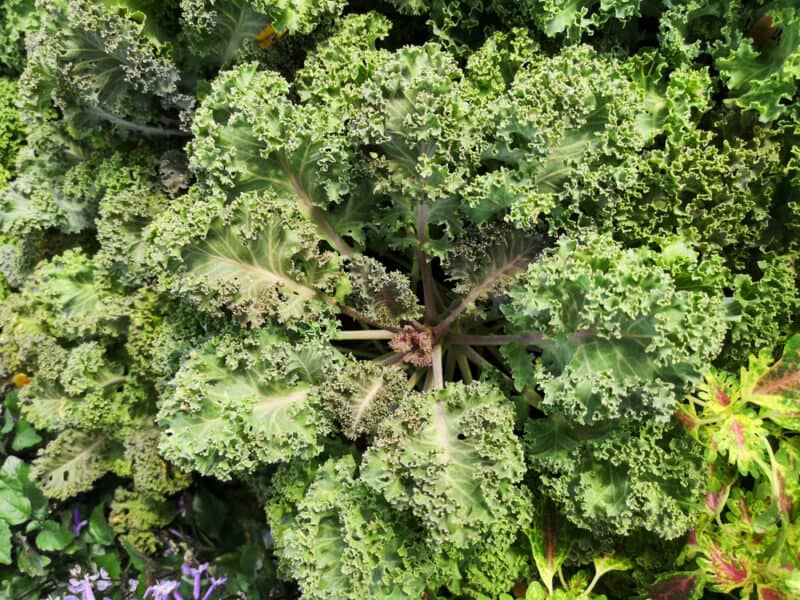
Before you panic, go look at the seed packet or info card for the kale that you’re growing. You might have planted a variety with purple leaves without realizing it. If you’re sure that the plant should be green, then it’s likely a nutrient deficiency. Lack of phosphorus can cause discolered leaves. Test your soil and add phosphorus if it’s lacking.
It can also be a sign that the leaves have been exposed to extremely cool temperatures, especially when young. The leaves may continue to grow normally, so don’t give up on the plant just yet.
12. Leaves Turning Pale Green
Pale green leaves are likely due to a lack of nitrogen. Again, test your soil and add nitrogen if your soil is deficient. Blood meal is an excellent way to add a bit of nitrogen without adding other unnecessary elements. Down to Earth makes an excellent product that is both good for the environment and will nourish your kale.
13. Stunted or Leggy Growth
Stunted or leggy growth are some of the most common kale growing problems.
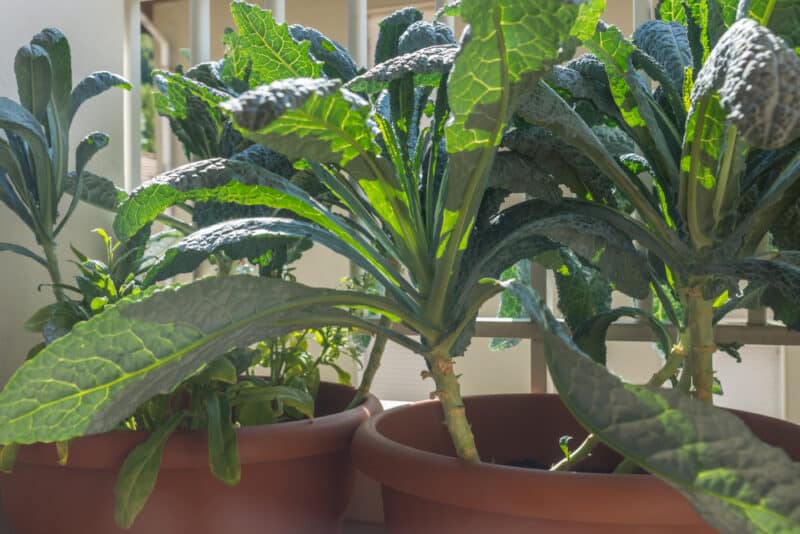
Whenever one of the key elements for good growth is out of whack, your plants may end up growing leggy or stunted. That means too much or not enough water, too much or not enough food, and too much or not enough sun. Lack of sunlight, in particular, causes leggy growth.
Inadequate food or water, on the other hand, is more likely the cause of stunted growth.
Soil that is too acidic or too alkaline will also cause stunted growth. Kale prefers a pH somewhere between 5.5-6.8. Crowded plants, whether they are planted too close to other plants or they’re crowded out by weeds, will also be stunted.
14. Weak or Dying Seedlings
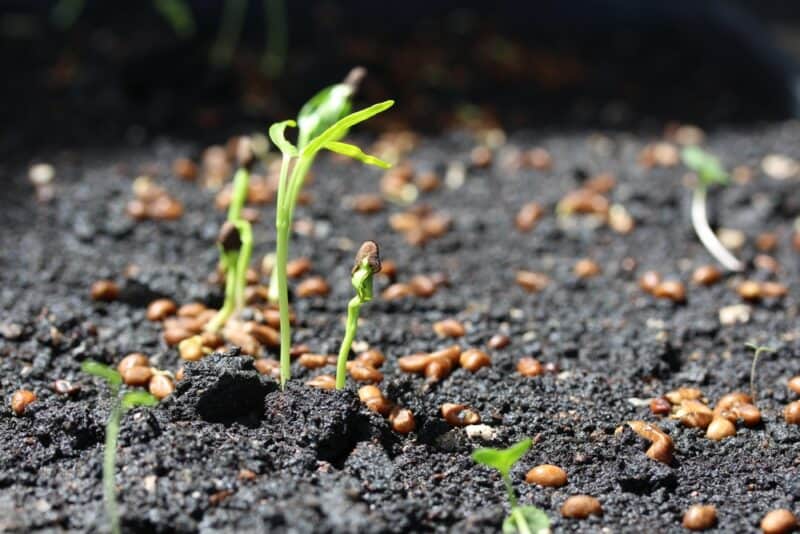
Kale, as with most brassicas, is susceptible to damping off disease. This disease is caused by a number of fungus-like pathogens called oomycetes in the Pythium and Fusarium genera, as well as Rhizoctonia solani. Sometimes seeds won’t germinate at all, but if they do, the seedlings will be weak, often with a soggy base near the soil.
To learn about identifying, preventing, and treating this problem, check out our guide.
15. Plants Cut Off at the Base
Something is eating your kale (besides you) if it is cut off at the base. The first culprit is the cutworm. This worm will chew the plant off at the base. You’ll come outside one morning, only to find the leaves laying on the ground in a heap. Collars are a fast, effective solution for protecting your plant.
Omnivores, on the other hand, eat the entire leaf. Rabbits, deer, and even birds will chomp on kale leaves, given the chance. Your best bet is to use cloches, fences, or row covers to protect your growing kale from these particular problems.
